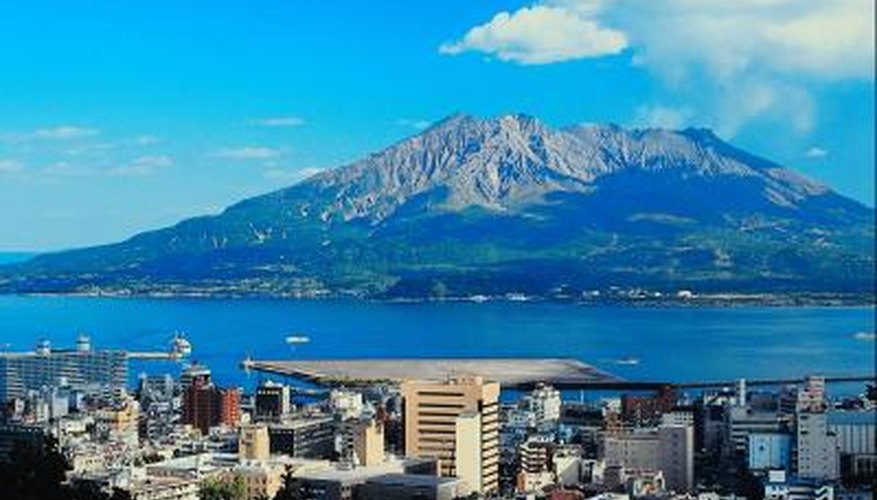Sakurajima is one of the most active volcanoes in Japan. The volcano is located on a small island in Kagoshima Bay that has since become joined to the mainland after a major eruption in 1914 caused the island to attach to the Osumi-hanto Peninsula. The volcano is located about four miles away from the city of Kagoshima, and has been the site of repeated violent eruptions throughout history. Sakurajima remains one of the most famous active volcanoes in the world.
Sakurajima Volcano
The Sakurajima volcano is a post-caldera cone of the Aira caldera, located at the northern part of Kagoshima Bay. About 22,000 years ago, an eruption of pyroclastic flow formed the Aira caldera. Sakurajima was formed about 13,000 years ago on the southern rim of the Aira caldera, and led to the creation of an island that was eventually joined to the mainland after the volcanic activity of 1914. Eruptions have consistently been recorded throughout history, as early as the eighth century.
- The Sakurajima volcano is a post-caldera cone of the Aira caldera, located at the northern part of Kagoshima Bay.
- Sakurajima was formed about 13,000 years ago on the southern rim of the Aira caldera, and led to the creation of an island that was eventually joined to the mainland after the volcanic activity of 1914.
Major Eruptions
The Sakurajima volcano has erupted numerous times throughout recorded history. Several eruptions are recorded in the 1470s, in 1779, 1914 and 1915, 1946 and in 1960. Each of these major eruptions resulted in large lava flows that wound up modifying the coastline of the island. The eruption that occurred in 1914 and 1915 was the most violent volcanic eruption in Japan since the country began keeping historical records. People could feel tremors as early as January 10, 1914, with gas emissions becoming visible on January 12, and the first eruptions occurring that same day. Volcanic activity continued sporadically into the following year. Ultimately 18 villages on the island were wiped out by lava flows, which destroyed about 2,500 buildings.
- The Sakurajima volcano has erupted numerous times throughout recorded history.
- The eruption that occurred in 1914 and 1915 was the most violent volcanic eruption in Japan since the country began keeping historical records.
Plumes
The Sakurajima volcano is known to produce plumes of ash in conjunction with clearly visible electrical discharges, known as volcanic lightning. According to a 2002 study referenced on the Photo Volcanca website, the volcanic plumes released by the Sakurajima volcano typically consist of three parts: an upper area containing positively charged volcanic gases, a middle part consisting mainly of negatively charged fine ash, and a lower part that is rich in large, positively charged ash particles.
Impact on Surrounding Area
Although no lava flows have occurred since 1946, activity from the Sakurajima volcano continues to affect the surrounding area. For example, ash emitted from eruptive activities has caused crop damaged and traffic disruption, and wet volcanic ash caused the island's electrical grid to short circuit in 1980. During the 1970s and 1980s, sporadic volcanic explosions caused shock waves that broke windows and car windshields, and the volcanic activity regularly affects air traffic arriving and departing from the nearby Kagoshima Airport.
